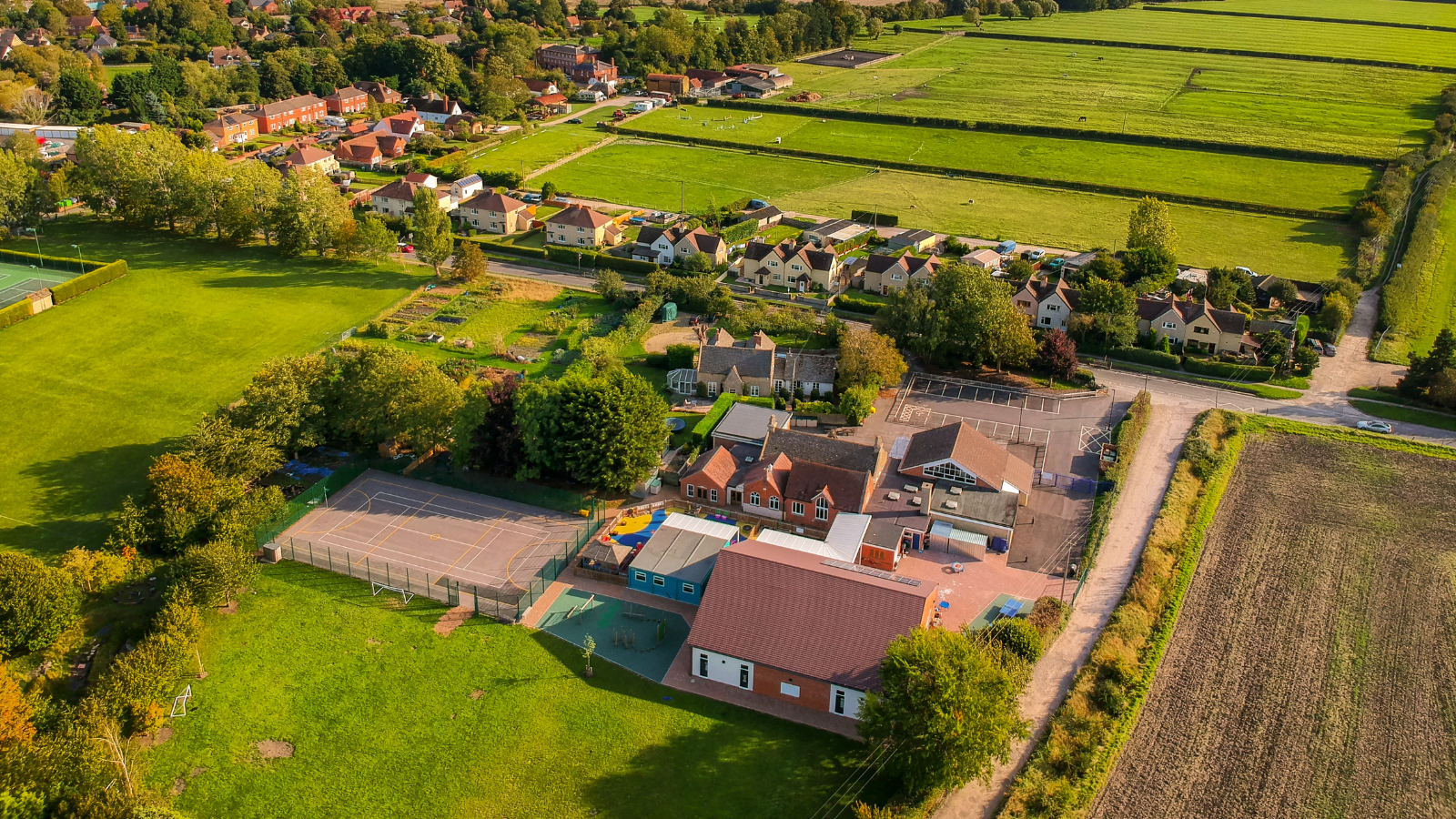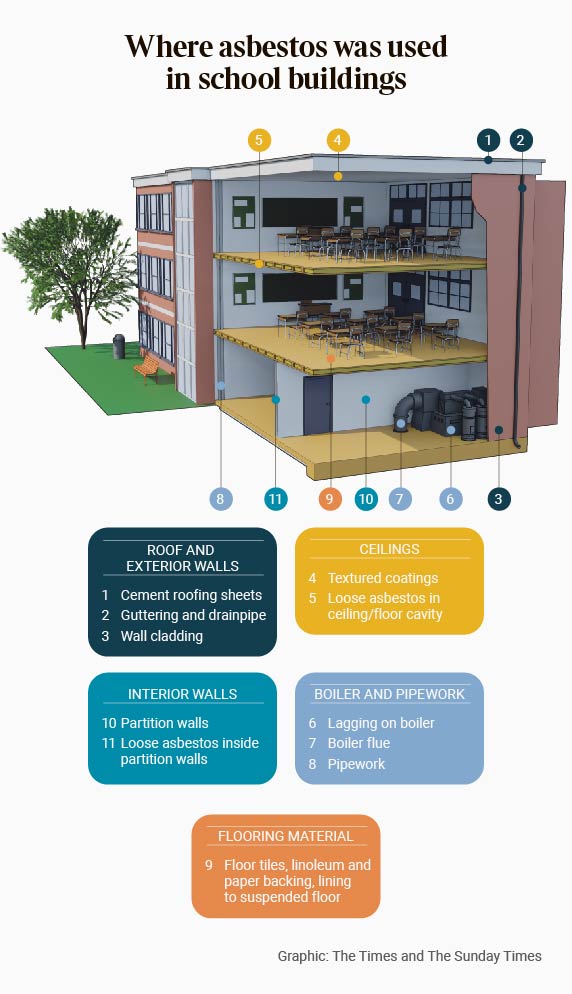
Is asbestos in schools really a concern? We know that asbestos is a silent killer that’s been putting our construction workers, military personnel and dock workers at risk for years. But a recent report in The Sunday Times has brought home the threat to the younger generation.
As specialists in asbestos services, RJS Waste Management want to share this news and highlight the need for asbestos removal in schools to keep our future generations safe.
Students and teachers are suffering exposure to asbestos
In 2018, 29-year-old PE teacher Chris Willis was told he’d likely live just one more year. He was exposed to asbestos as a schoolboy and developed mesothelioma –– a fatal asbestos-related cancer –– all those years later.
“You don’t expect to go to school, get an education and come out with what I’ve got,” he said. “I don’t think schools realise how much asbestos is still dormant in buildings and how much risk it poses to pupils.”
Willis was a pupil at Kenton School, Newcastle, between 2000 and 2007. The original 1961 school buildings were demolished in 2008. But this isn’t always the case.
Despite the National Audit Office’s reveal that around 24,000 school buildings are past their initial design life, 21,500 schools built with Asbestos Containing Materials (ACMs) are still operational.
As many as 10,000 pupils and staff have died after exposure to asbestos in schools over the past four decades. What’s more over 5,000 people die from asbestos-related diseases –– whether it’s mesothelioma, asbestosis or lung cancer –– every year.
In response, The Sunday Times has launched an asbestos awareness campaign. They’re urging the government to develop a plan to remove all asbestos in the next 40 years.
Professor Kevin Bampton, chief executive of the British Occupational Hygiene Society, commented: “A tragedy is unfolding as we watch.” He continued: “We are currently sowing the seeds of a spike in cancer that will hit us in 30 to 40 years if we don’t act now. There is a perception that asbestos is a thing of the past, but it isn’t.”
Where you might find asbestos in school buildings
While asbestos was banned in new buildings in the UK from 1999, over 6 million tonnes of asbestos may still be present in around 1.5 million buildings.
According to a 2019 Department for Education survey, this includes more than 80% of state schools in England and around 60% of schools in Scotland and Wales.
The Sunday Times shared a useful graphic, like that used by the Health and Safety Executive, to highlight the areas where ACMs might have been used. These include:
Roof and exterior walls
- Asbestos cement roof sheets
- Guttering and drainpipes
- Wall cladding
Interior walls
- Partition walls
- Loose inside partition walls
Ceilings
- Textured coatings
- Loose inside wall cavity
Boiler and pipework
- Lagging on boiler
- Boiler flue
- Pipework
Flooring material
- Asbestos floor tiles
- Linoleum and paper backing
- Floor lining

Asbestos legislation and policies
Did you know that health and safety legislation doesn’t call for schools to inform parents about the presence of asbestos in schools? However, schools with asbestos present must have an asbestos management plan, even if they don’t make it public.
The government’s policy is to leave asbestos in place unless it’s disturbed and damaged. But, considering the lightweight structures of many schools, this is unviable and risky.
Matt Hancock commented: “As a former health secretary, I am deeply concerned about the ongoing health scandal caused by asbestos in buildings, particularly in hospitals and schools.
“We cannot turn a blind eye to this tragedy any longer. It is crucial we urgently remove asbestos from our schools and hospitals, establish a comprehensive register, promote awareness through digital tools, monitor air quality and enforce training standards. It’s frankly astonishing this hasn’t all happened years ago.”
Acting now on asbestos in schools
Airtight on Asbestos has some strong views on the action needed to combat the danger of asbestos in schools:
“The Health and Safety Executive sets the rules for asbestos and believes the substance is best managed rather than removed, assigning responsibility for this to a school’s ‘duty holder’. The problem is, this approach assumes that the site manager always identifies asbestos accurately, knows when it has been disturbed, and acts appropriately afterwards. When deadly particles can be released into the air by something as routine as a door slam, this simply isn’t robust enough.
“The risk of teachers and children inhaling asbestos particles could be reduced if we matched the vigilance of other countries. Unlike many nations, the UK does not carry out routine air monitoring in schools containing asbestos. We could also lower the risk by replacing school buildings that are past their design life. Many contain high levels of asbestos yet are still being used as classrooms.
“The HSE says asbestos-related deaths today are the result of exposures that predate the existing rules. But why take the risk? Asbestos is a silent killer and symptoms often develop decades after fibres have been inhaled. How can we be sure that today’s teachers and children aren’t being exposed? Unless we act now, there’s a risk that by the time they live long enough to see the effects of asbestos poisoning, it will already be too late”.
The Sunday Times — which is campaigning for a phased removal of asbestos, string with schools and hospitals — has proposed the following five-point plan:
- Draw up a national strategy for the planned removal of all asbestos over the next 40 years, including identifying properties most in need of urgent action and clear guidance on the safe disposal of asbestos.
- Create a national register of properties which contain asbestos and where it can be found. Owners of all non-domestic properties should be forced to comply with the rules for registration.
- Develop an app, or digital register, that can be accessed by anyone renovating a property for free to discover if there is asbestos.
- Introduce regular reporting of air quality around buildings that contain asbestos to monitor fibres.
- Set minimum standards of training for appointed duty holders who are responsible for monitoring asbestos on properties.
We’re here for your asbestos in schools concerns
RJS Waste Management has worked with schools and colleges in West Sussex, Oxfordshire and London. We manage all types of waste, specialising in asbestos surveys and asbestos removal.
There are around 3250 schools in London, more than 650 schools in West Sussex and 600 schools in Oxfordshire. Our aim’s to keep the children and teachers in our local areas safe.
Whether you manage a school building or you’re a construction worker contracted to carry out a refurbishment on a school building built before 2000, you’re likely to need our school asbestos surveying services.
Then, if any asbestos fibres are found present in the fabric of the building, you can call on us for a school asbestos removal and/or asbestos collection too.
Contact your local RJS Waste Management office and let’s book a free quote –– Chichester: 01243 213273 or Oxford: 020 7859 4520.




